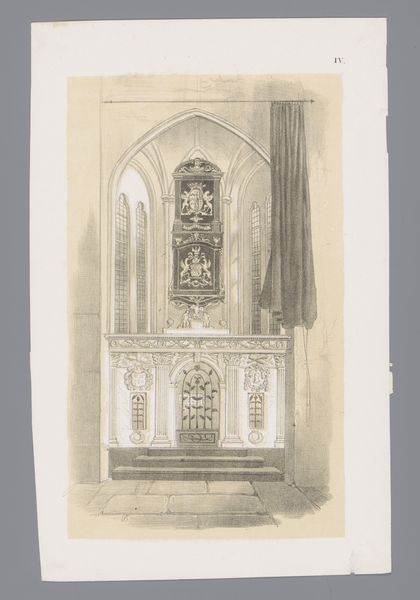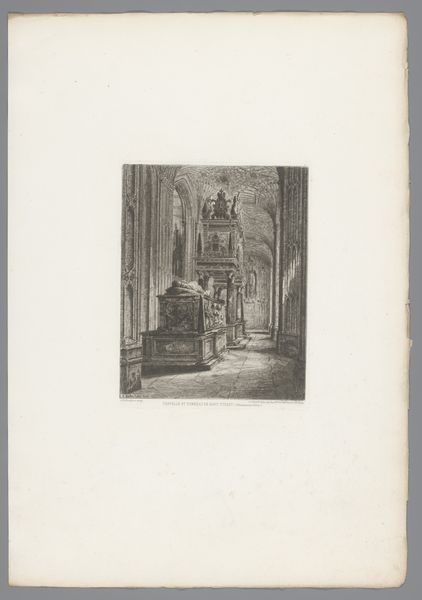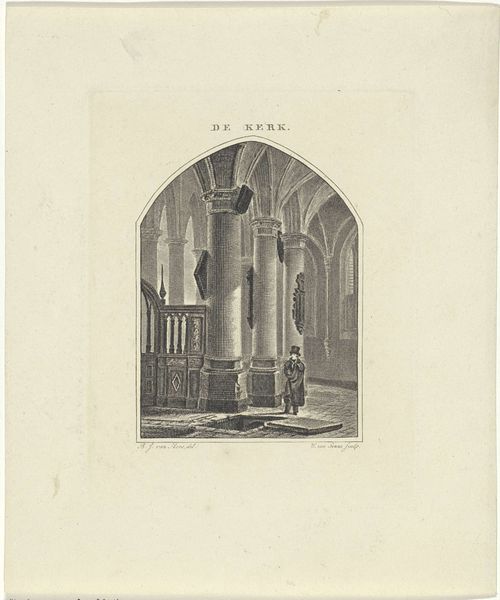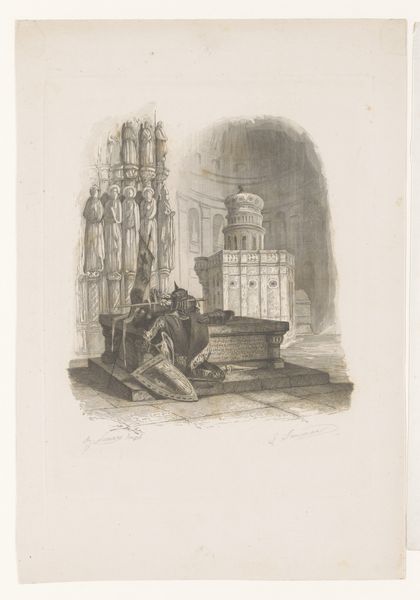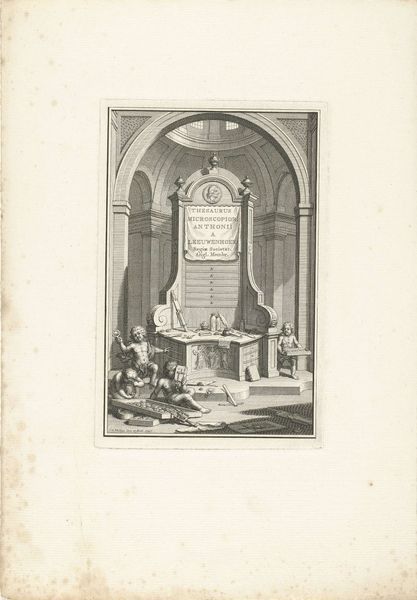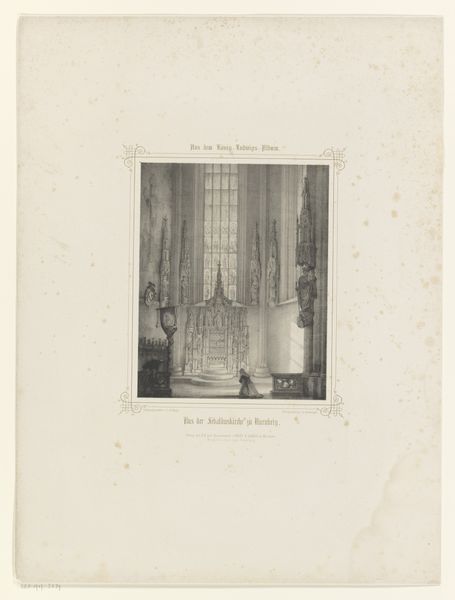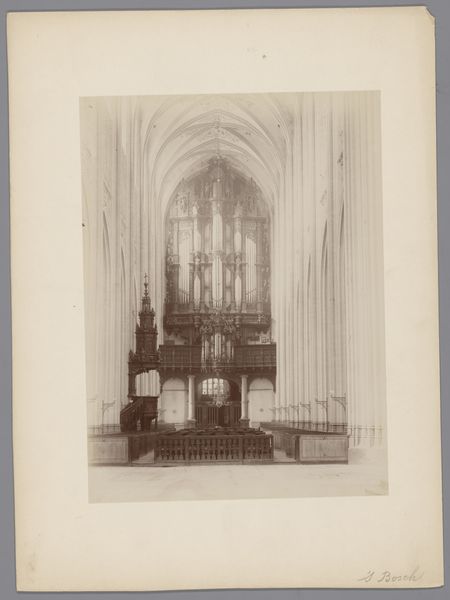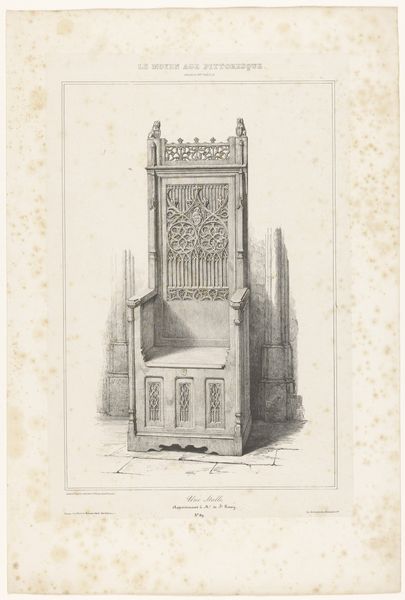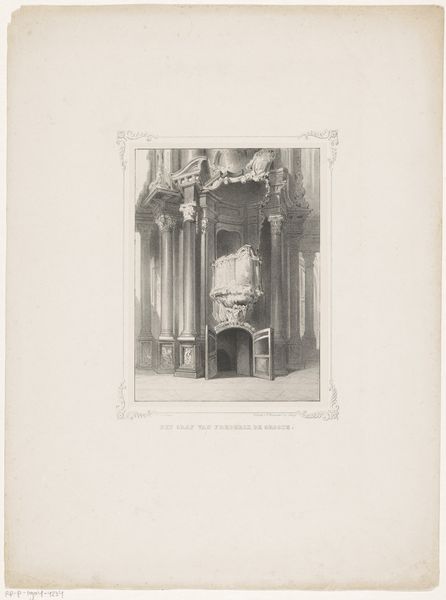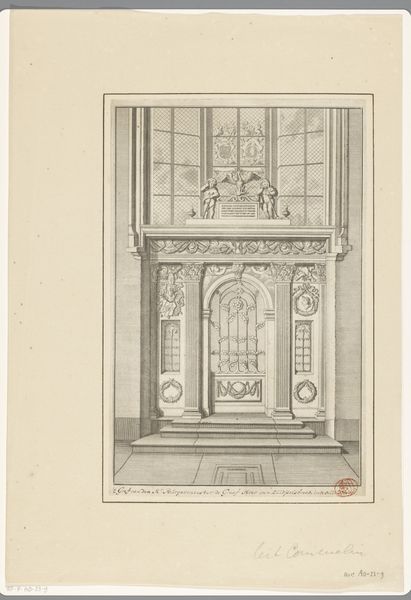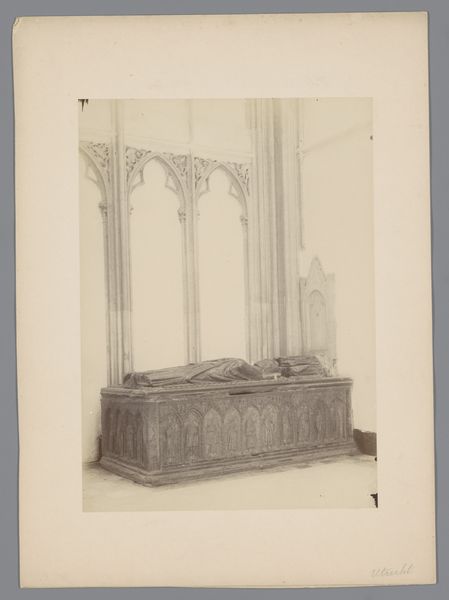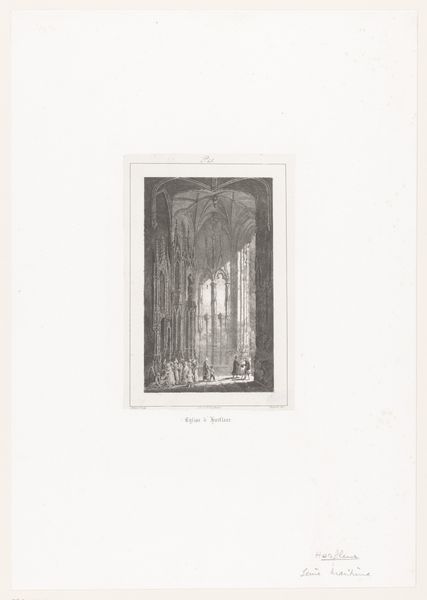
drawing, print, paper, engraving
#
drawing
# print
#
paper
#
history-painting
#
engraving
Dimensions: height 218 mm, width 155 mm
Copyright: Rijks Museum: Open Domain
Curator: This engraving, crafted between 1833 and 1879 by Auguste Numans, is entitled "Grafmonument van Artevelde," or the Grave Monument of Artevelde. Editor: My immediate sense is one of quiet dignity. The somber lighting and the carefully rendered textures lend it a solemn, almost reverent, air. Curator: Indeed. The imagery plays heavily into this feeling. We have the helmet, sword, and other objects draped on what appears to be a tomb or cenotaph—all symbols of earthly authority now at rest. The hanging lantern adds to the contemplative atmosphere. It evokes the presence of historical figures. Editor: You're right. That simple lamp, hanging suspended like that, triggers a cultural memory. It has parallels with vigil lights or eternal flames marking places of profound respect and the weight of cultural figures such as Artevelde in collective memory. Curator: Considering its historical context, this print undoubtedly engages with ideas of Belgian national identity in the 19th century, particularly the revival of interest in medieval history and civic heroes such as Artevelde. Artevelde becomes a powerful image to rally public opinion for those attempting to use his image. Editor: It’s a skillfully made print, which invites careful observation. Curator: Looking at Numans' rendering of the tomb architecture—the arches and detailed carvings, how do you perceive its artistic role? Editor: Numans, consciously, presents it almost as a stage—a setting to present a highly political version of the past to a modern audience through an image that uses carefully rendered textures in combination with clear historical symbolic shorthand. Curator: So it seems that through the strategic combination of medium, subject matter, and visual vocabulary, Numans delivers an image designed for both commemoration and engagement with ideas about the relationship between Belgium’s medieval past, national values and popular political agency in the mid 19th century. Editor: And as a tool in shaping contemporary national narratives, visual and historical elements become less about objective history and more about creating shared values or mythologies that will shape society going forward.
Comments
No comments
Be the first to comment and join the conversation on the ultimate creative platform.
